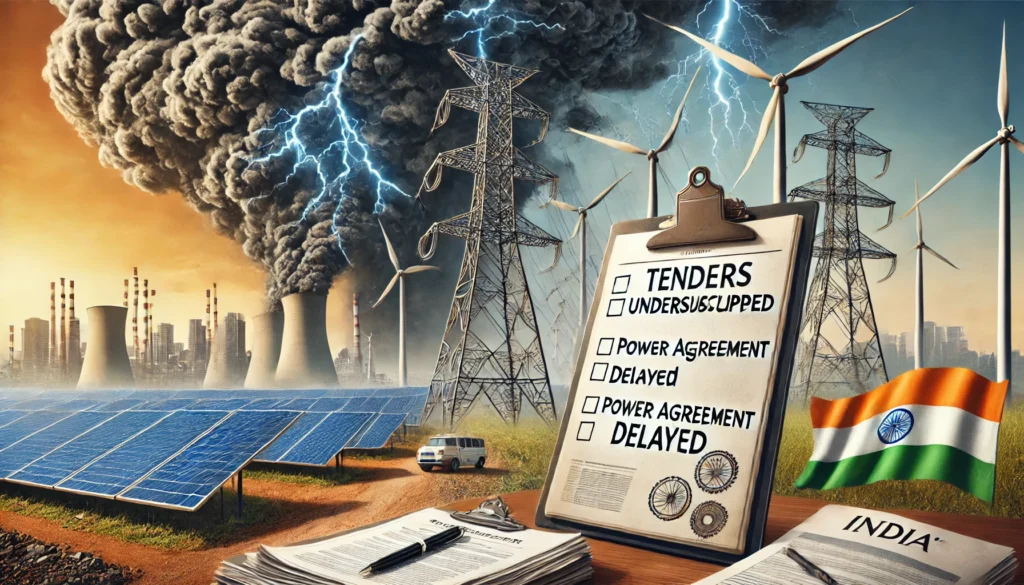According to a report released Thursday by the Institute for Energy Economics and Financial Analysis (IEEFA), the hurdles include a snail-like demand for the tenders, delays in power purchase agreements, and cancellation of projects.
This year, India issued tenders for a whopping 73 GW of utility-scale renewable energy, which is a record. However, 8.5 GW went unsubscribed, which is five times more than in 2023. The reasons for the low subscription rates were attributed to tender structures appearing to be torturous and delays in the readiness of interstate transmission, the report stated.
Massive Unsigned Power Sale Agreements
More than 40 GW of PSAs pile up cumulatively in India and remain unsigned, crippling the sector. Among this backlog, SECI alone makes 12 GW, thus adversely affecting the overall renewable energy deployment speed.
An additional 38.3 GW of renewable projects were cancelled from 2020 to 2024, which is 19% of the total planned capacity. Those have been cancelled for a variety of reasons, including:
- Bad tendering design
- Technical or location issues
- Less subscription
- Delay in contracting power supply agreements
Delays Will Affect 2030 Targets for Renewable Energy in India
India aims to build up at least 500 GW of non-fossil fuel power capacity by 2030, up from 165 GW today. However, delays associated with the implementation of projects have proved to be the biggest tires on India’s road toward this target.
"The other major hurdle to the 2030 target for renewable energy in India is delays in the project implementation," said Ashita Srivastava, senior research associate at JMK Research and co-author of the report.
She warned that if the problems persist, they would put off potential investors and decrease their access to low-priced financing from large-scale investors, whereas the latter is the key to much-needed growth of India’s green energy sector.
Shortfall from Past Renewable Energy Targets
Despite great policy support, India ultimately fell short of its 2022 renewable energy capacity target of 175 GW. Today, fossil fuels still account for over two-thirds of India’s total power generation, raising questions of a troublesome clean energy transition for the country.
According to the Ministry of New & Renewable Energy (MNRE), in 2024, India actually added nearly 28 in terms of solar and wind capacity, though the majority of which—70%—came from solar. But slow signing of power agreements and project delays may now hamper future growth.
The Road Ahead
Resolving tender processes, transmission interstate bottlenecks, and signing power agreements in time is a must for compressing the timeline for renewable energy takeoff in India and hence realising its ambitious 2030 target. Such solutions to these impediments are crucial for further investment assurance and energy security in the long run.
Sources- Reuters and IEEFA

